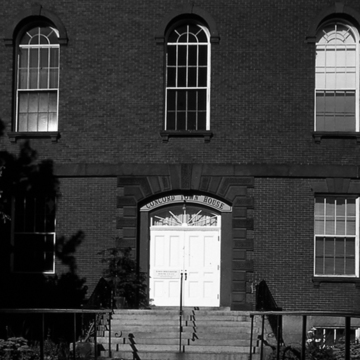Monument Square is the historical, political, and institutional core of Concord. About a year after the 1635 incorporation of the town, under an oak tree at the northwest intersection of Monument Square and Main Street, the Reverend Peter Bulkeley and Major Simon Willard sealed the purchase of a six-mile-square plantation from local Indians. Monument Square, the northern half of the original common, became the center of political life in Concord. Named a “shire town” of Middlesex County by at least 1692, Concord built a combined courthouse and town house in 1721. That building and its replacement, which burned in 1849, were superseded by another Middlesex County Courthouse (1851, with multiple additions to the rear in the mid-twentieth century, NRD), at 30 Monument Square, a handsome Italianate clapboard building. Because the county ceased to permit the town to hold town meetings in the new courthouse, Concord had to build a new Town Hall (NRD), at 22 Monument Square, also in 1851. Architect Richard Bond, who had remodeled First Parish Church in 1841, designed the brick and brownstone Italian-ate town hall, which continues as the seat of town government. It provides the area's best surviving work by Richard Bond, whose similar Lawrence Hall (1847) and Gothic Revival Gore Hall (1838–1841), both for Harvard University, have been demolished. Across Bedford Street from the town hall stands St. Bernard's Roman Catholic Church (NRD) at 12 Monument Square, originally the home of the Universalist church when built in 1840–1842 facing Bedford Street. The Catholic Archdiocese of Boston purchased the building in 1863 for the fledgling congregation of Concord
You are here
Monument Square
1820–1889. Monument Sq.
If SAH Archipedia has been useful to you, please consider supporting it.
SAH Archipedia tells the story of the United States through its buildings, landscapes, and cities. This freely available resource empowers the public with authoritative knowledge that deepens their understanding and appreciation of the built environment. But the Society of Architectural Historians, which created SAH Archipedia with University of Virginia Press, needs your support to maintain the high-caliber research, writing, photography, cartography, editing, design, and programming that make SAH Archipedia a trusted online resource available to all who value the history of place, heritage tourism, and learning.


